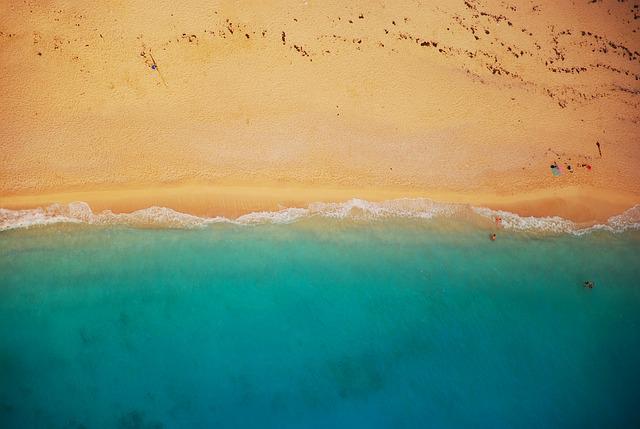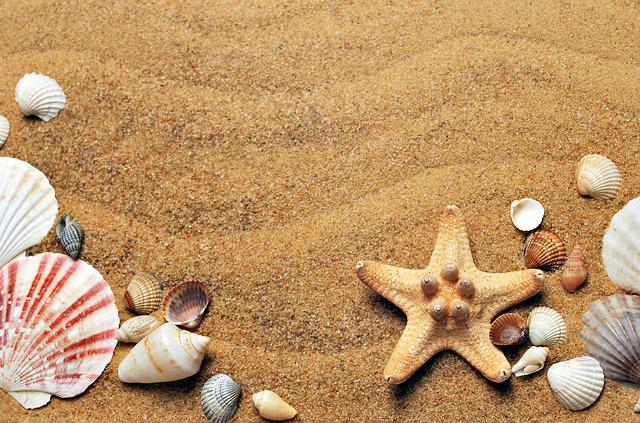
Why Is Sand Called Sand? Answered & What You Need To Know
Do you have the question, why is sand called sand?
The word sand is thought to have originated from an Old English word, which itself originated from the old Dutch word sant, which became zand (meaning, you guessed it, sand).
For a more thorough explanation of the meaning of the word “sand,” continue reading.
Table of Contents
Why Is Sand Called Sand?
It can be challenging to pinpoint the precise origins of words because language is constantly changing and distorted.
The word sand is thought to have originated from an Old English word, which itself originated from the old Dutch word sant, which became zand (meaning, you guessed it, sand).
As the majority of people a few hundred years ago most likely lived and died without ever having seen the ocean, the word didn’t originally refer to the yellow stuff on the beach.
It was actually employed to describe shaky ground discovered on fine dirt near a riverbed.
Later on, the phrase came to refer to something that was coarser than dust but finer than gravel.
Word “Sand”Origin
Sand’s etymology is a little more complicated than just joining two closely related words to form a noun, like many other words.
Originally, it is widely accepted that the word “sand” might have come from an Old English word, ‘zand’. Furthermore, the word ‘zand’ is also believed to have originated from an old Dutch word – ‘sant’.
In those days, people frequently used this word to describe a substance that was coarser than dust but finer than gravel.
Therefore, it is clear just from that that it did not immediately refer to the yellow grains discovered along the beaches. When those hundreds of years ago occurred, countless individuals probably had never even seen an ocean!
How Is Sand Made?
Sand is found in a wide range of environments and sources. Sand is created through a variety of processes, some of which are more time-consuming than others.
Known sources of the basic components used to make sand include:
- Decomposed corals
- Rocks
- Shells
- Living things’ by-products
Now, some of the most popular methods for creating sand include the following:
Abrasion & Attrition
Abrasion is a process where things like wind or water currents rub against a rock for a long time. The rock’s surface is continuously chipped off by this process, which transports the silica or feldspar to other areas as sand sediments.
Attrition, on the other hand, is when solid particles are blown and hit against weak rock surfaces. The weaker surface’s weaker surface breaks off in pieces as a result of this action. In other cases, the small particles blown against these rocks may also disintegrate, if they’re weaker, into smaller fragments that subsequently form sand.
Living Things’ Waste
Unbeknownst to many, organisms like the parrotfish, which is frequently found in Hawaii, play a significant role in the formation of sand. These interesting aquatic animals feed off the rock-hard surfaces of dead corals and rocks by biting and scraping off the algae growing on them.
Of course, they also ingest some calcium carbonate or hard rock pieces into their digestive systems. These bits are then ground and excreted from the fish’s body as fine, white sand that presently graces the glorious Hawaiian beaches.
Organic Decay
The pink sands of Bermuda’s beaches are particularly affected by this process.
Foraminifera, a category of single-celled and shelled organisms, decomposed over time, resulting in the formation of these sands. When they finally land on Bermuda’s beach shores, they typically have a coordinated color on their surfaces.

Sand First Appeared On Earth When?
For example, the rock forming the coastline at Black Sands Beach first became uplifted above sea level 3-4 million years ago but dating the fossils of sea animals in the rocks has told us that the rocks were formed a range of 80-200 million years ago.
Are Fish Poop And Sand Related?
Sand is the end product of many things including decomposed rocks organic by-products and even parrotfish poop. … White sand, which the bumphead parrotfish may produce at a rate of several hundred pounds annually, is excreted by it.
In The Sea, What Lies Beneath The Sand?
In essence, the sand gets more compact as you go deeper and eventually encounters sand stone. Under that there would be a layer of limestone. For the rising and falling of the sea levels, this pattern would alternate. The thickness varies according to how long the sea level was at each height.
From Where Does Desert Sand Originate?
This sand was washed in by rivers or streams in distant less arid times – often before the area became a desert. A region loses its ability to hold the soil down due to a lack of vegetation and water once it becomes arid. The smaller clay flakes and dried organic matter are then carried away by the wind. Sand from the desert has been left behind.
What Is The World’s Tallest Sand Dune?
Duna Federico Kirbus
To give you an idea of how far out they’re spread the mighty Duna Federico Kirbus in Argentina is the highest sand dune in the world while many Namibia holidays all the way over in southern Africa also revolve around almighty sand dunes which make this list.Mar 8 2020
What Do You Call Those Tiny Sand Dunes?
sand dunes
Small hills of sand are called sand dunes. All year long, the desert has a very hot and dry climate.
What Is Purple Sand?
How Does Purple Sand Get That Way? The Pfeiffer Beach tucked between the ocean and the Los Padres National Forest in Big Sur California boasts unusual purple-hued sand. Manganese garnet, a mineral that is present in the hills that surround the beach, gives the sand its color.
The Reason Why Some Sand Is Black.
Black sand beaches are black because many volcanic minerals and rocks are dark-colored. … High iron content is the root cause of both darkness and weight. Due to its excellent light absorption and weight, iron gives most minerals their dark color. Iceland’s Reykjanes Peninsula is surrounded by black volcanic sand.
Where Does Sea Sand Originate?
Short answer: Sand on beaches around the world comes from the weathering and pulverization of rocks over millions of years along with fragments of shelled creatures and coral and that have been deposited on the coast by the waves.
What Substance Makes Up Pink Sand?
Pink sand beaches get their color from thousands of broken coral pieces shells and calcium carbonate materials left behind by foraminifera (tiny sea creatures with red and pink shells) that live in nearby coral reefs.
Can People Create Their Own Sand?
Sand is second only to water as a natural material extracted by humans and our society is built on it quite literally. The unquenchable needs of China and India for housing and infrastructure have driven a quarter increase in global production in just five years.
Is There Less Sand On The Planet?
Sand is the world’s most consumed raw material after water and an essential ingredient to our everyday lives. However, there is a shortage, which climate scientists say is one of the biggest sustainability challenges of the twenty-first century.
Can Sand Be Man Made?
Larger aggregate pieces are broken down into sand-sized aggregate particles to create manufactured sand, also known as manufactured fine aggregate (MFA). Natural sand is frequently unavailable or too expensive to transport to the required location, so manufactured sands are typically used in mixtures in those areas.
Conclusion
The article discussed the origin of the name “sand.”
Lots of people believe it, but trust us, sand is NOT called sand because it’s between the sea and the land.
Consider this: Given that most sand is found in the world’s deserts, why would they name it after a beach?
I appreciate your reading.


